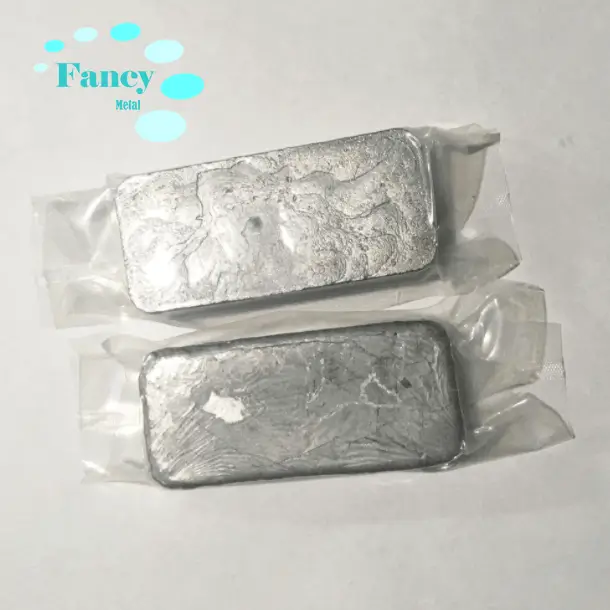Fancymetal offers high purity (customizable) metal products, as well as oxides, product shapes, foils, plates, wires, tubes, rods, powders and a variety of custom shapes.
Applications:
✔Ultra-pure tellurium single crystal is a new type of infrared material.
✔Use of tellurium in metallurgical industry: used in steel and copper alloys to improve their cutting performance and increase hardness.
✔High-purity tellurium can be used as an alloy component of thermoelectric materials.
✔A small amount of tellurium containing lead can improve the corrosion resistance, wear resistance and strength of the material, and is used as the sheath of submarine cables.
✔Tellurium can be used as an additive for petroleum cracking catalysts and a catalyst for making ethylene glycol.
✔Tellurium oxide is used as a colorant for glass.
✔Adding tellurium to lead can increase the hardness of lead, which is used to make battery plates and printed lead.
✔Tellurium and several tellurides are semiconductor materials.
✔Tellurium in white cast iron acts as a carbide stabilizer to make the surface strong and wear-resistant.
Distribution range:
Before the 1990s, it was generally believed that most of the world's recoverable tellurium was associated with copper deposits. The U.S. Bureau of Mines, based on copper resources, calculated that 0.065 kg of tellurium can be recovered per ton of copper, and estimated that the global tellurium reserves are about 22,000 tons, with a reserve base of 38,000 tons. The geochemical properties of dispersed element tellurium are much more active than traditional knowledge. It can be enriched and mineralized on a large scale to form independent deposits or industrial ore bodies with economic value, such as the Dashuigou tellurium-bismuth gold deposit in Shimian, Sichuan, the Guilaizhuang tellurium-gold deposit in Shandong, and the Beiling telluride-type gold mine in Henan. This has forced humans to re-understand the distribution of tellurium resources.
Preparation method:
In industry, tellurium is extracted from the anode mud of electrolytic copper in copper smelting.
Anode mud containing about 3% tellurium is dried and sulphated at 250℃, then selenium dioxide is volatilized at 700℃, and tellurium is retained in the slag. Copper sulfate is leached with water and then with sodium hydroxide solution to obtain sodium tellurite solution. The leached solution is neutralized with sulfuric acid to produce crude tellurium oxide precipitation. Repeat the precipitation of oxide twice, and then electrolyze the aqueous solution to obtain tellurium containing 98% to 99%
Advantages:
✔ Strict quality control of raw materials, process control and pre-delivery procedures.
✔ Strong technical capabilities make it a trustworthy long-term supplier.
✔ Technical support: 24-hour technical support is provided by email or phone.

